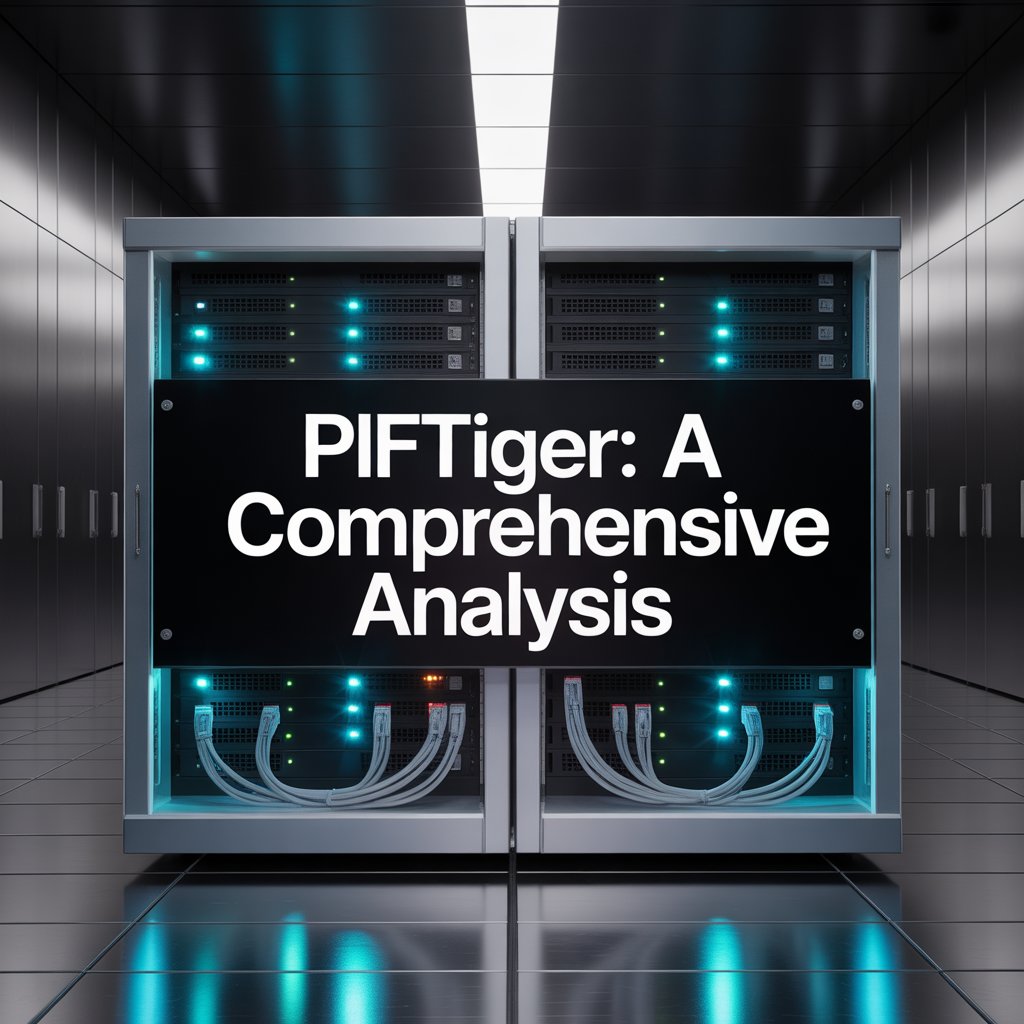The digital ecosystem is a vast and continuously evolving landscape, populated by millions of websites, platforms, and online personas that range from the globally influential to the deeply obscure. Within this complex matrix, users frequently encounter cryptic names, domains, and identifiers that lack immediate context or clear meaning, prompting curiosity, caution, or confusion. One such term that has surfaced in various online contexts is “Plftiger.” Unlike a recognizable brand or a common word, this particular sequence of characters presents a puzzle. It does not readily correspond to a well-known company, a standard acronym, or a word in a major language, which immediately places it in a category worthy of scrutiny and careful analysis. The appearance of an ambiguous term like “Plftiger” can trigger a range of reactions, from simple curiosity about its origin to legitimate concerns about cybersecurity and online safety. This comprehensive analysis aims to dissect the phenomenon of “Plftiger” from multiple angles, exploring the methodologies for researching such obscure online references, analyzing the potential implications of encountering them, and providing a structured framework for users to assess similar digital mysteries they may encounter in the future, thereby promoting a more secure and informed online experience.
Methodologies for Digital Forensics: Tracing the Origins of an Ambiguous Term
When confronted with an enigmatic term like “Plftiger,” the first step for any curious user or security-conscious individual is to employ a series of digital forensic techniques to uncover its meaning and origin. The process begins with advanced search engine queries. Placing the term within quotation marks (“Plftiger”) forces search engines to return results for that exact phrase, filtering out irrelevant pages. The results must then be analyzed for context: are the mentions appearing on legitimate forums, obscure coding websites, social media platforms, or potentially malicious link farms? The next critical step involves checking domain registration. Using a WHOIS lookup tool to search for “plftiger.com” or similar domain variations can reveal if the term has been registered as a website. Key information to note includes the creation date of the domain (a very recent date can be a red flag), the registrar, and the contact information provided, which is often hidden behind privacy protection services, a common practice for both legitimate and dubious websites. Furthermore, scanning the term with cybersecurity tools is a prudent measure. Reputable antivirus software often has website safety checkers that can flag known malicious domains. Additionally, checking the term against user-generated reports on platforms that catalog phishing sites or online scams can provide crowdsourced insights into its reputation, offering valuable clues from the experiences of other users.
Potential Implications and Risk Assessment: From Benign to Malicious
The ultimate purpose of this investigative process is to conduct a thorough risk assessment. The term “Plftiger” could have a spectrum of implications, and determining where it falls on this spectrum is crucial. On the most benign end, it could be a nonsensical username generated by an algorithm for a new social media account, a placeholder term in a piece of software or code, a misspelling or typo of a more common word, or an inside joke or reference within a very small, specific online community. In these cases, the term poses no threat and is simply a digital artifact without significant meaning. However, on the more concerning end of the spectrum, the term could be associated with malicious activity. It could be part of a randomly generated name for a fraudulent website designed to mimic a legitimate service in a phishing attack, a command or identifier related to malware or a botnet, or a keyword used in comment sections or forums to generate spam backlinks for Search Engine Optimization (SEO) poisoning. The method of encounter is a major factor in this assessment; if the term appeared in an unsolicited email, a pop-up advertisement, or a redirect from another website, the probability of it being associated with a malicious campaign increases significantly and warrants extreme caution.
Proactive Cybersecurity Hygiene: Strategies for Navigating Digital Obscurity
The case of “Plftiger” serves as a potent reminder of the importance of proactive cybersecurity hygiene for all internet users. The digital world is filled with such ambiguities, and developing a standard operating procedure for dealing with them is a key component of personal online safety. The foundational rule is to exercise extreme caution with hyperlinks. Never click on a link containing an unfamiliar or suspicious term from an unverified source, especially within emails or instant messages. Hovering over a link (without clicking) to see the actual destination URL in your browser’s status bar can often reveal a mismatch between the displayed text and the true target. Secondly, maintain robust cybersecurity defenses. This includes using updated antivirus and anti-malware software on all devices, enabling a firewall, and ensuring your web browser and operating system are patched with the latest security updates. These tools provide a critical first layer of defense that can block access to known malicious sites and alert you to potential threats before they can cause harm. Finally, cultivate a mindset of healthy skepticism. If an online offer, message, or website seems too good to be true or triggers any sense of unease, the safest course of action is always to disengage and conduct further research from a separate, secure device if necessary. Trusting your instincts and prioritizing safety over curiosity is the most effective strategy for navigating the uncertain corners of the internet.
Conclusion
The journey to understand a term like “Plftiger” is a microcosm of the modern online experience, where curiosity must be balanced with caution. Our investigation underscores that not every digital mystery has a sinister explanation, but neither should any be dismissed without due diligence. The process of inquiry itself—using search engines critically, checking domain registrations, and leveraging security tools—is a valuable skill that empowers users to take control of their digital safety. While the specific origins of “Plftiger” may remain nebulous without more context, the framework for analyzing it is clear and universally applicable. It reinforces the principle that in the vastness of the internet, critical thinking is the user’s most vital defense. By adopting a proactive and analytical approach to unfamiliar online entities, individuals can confidently explore the digital world, mitigate potential risks, and ensure that their interactions remain secure, informed, and free from the threats that often hide behind obscure names and ambiguous links.
FAQ Section
Q1: Is “Plftiger” a virus or malware?
A: The term “Plftiger” itself is not a virus. It is a string of characters. However, it could potentially be used as part of a malicious campaign. For example, it could be in the name of a file associated with malware or a website domain set up for phishing. Your antivirus software is the best tool to determine if a specific file or website is a threat. If you encountered this term in a suspicious context, running a full system scan is a recommended precaution.
Q2: I found “Plftiger” on my computer. What should I do?
A: The action depends entirely on the context.
-
If it’s a filename: Do not open it. Run a virus scan on the specific file immediately using your installed antivirus software.
-
If you saw it in a web browser: Clear your browser’s cache and cookies. If you clicked on anything or entered any information, consider scanning your system for malware and monitor your accounts for suspicious activity.
-
If it’s simply a search term you saw online: There is likely no immediate action needed, but it’s wise to avoid clicking on any links associated with it.
Q3: What does “Plftiger” stand for?
A: There is no widely recognized or official meaning for “Plftiger.” It does not appear to be a standard acronym in English or other major languages. It is most likely a nonsensical string, which could be a randomly generated username, a placeholder in code, a typo, or a brand name for a very small or obscure entity. Its meaning is entirely context-dependent.
Q4: Could “Plftiger” be a phishing website?
A: It is a possibility that any obscure term could be used as part of a phishing website’s domain name. Scammers often create domains that are slight misspellings of legitimate sites (typosquatting) or use random characters. You should never enter any personal or financial information on a website unless you are 100% certain of its legitimacy. Check the URL carefully for odd spellings and look for signs of a secure connection (https:// and a padlock icon).
Q5: How can I protect myself from obscure online threats like this?
A: The best defense is a combination of technology and behavior:
-
Use Security Software: Maintain a reputable antivirus/anti-malware program and keep it updated.
-
Think Before You Click: Be highly skeptical of links in unsolicited emails, messages, or pop-up ads.
-
Keep Software Updated: Regularly update your operating system, browser, and all applications to patch security vulnerabilities.
-
Use Strong Passwords: Employ unique, complex passwords for different sites and consider using a password manager.
-
Enable Multi-Factor Authentication (MFA): Wherever possible, enable MFA on your online accounts for an added layer of security.


